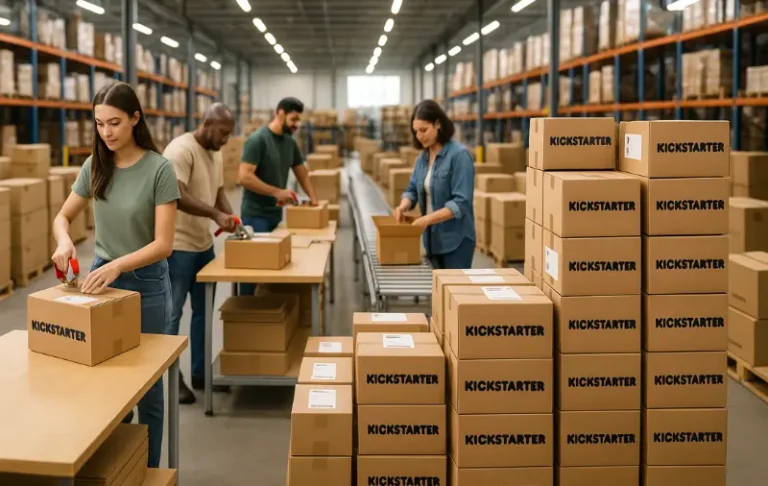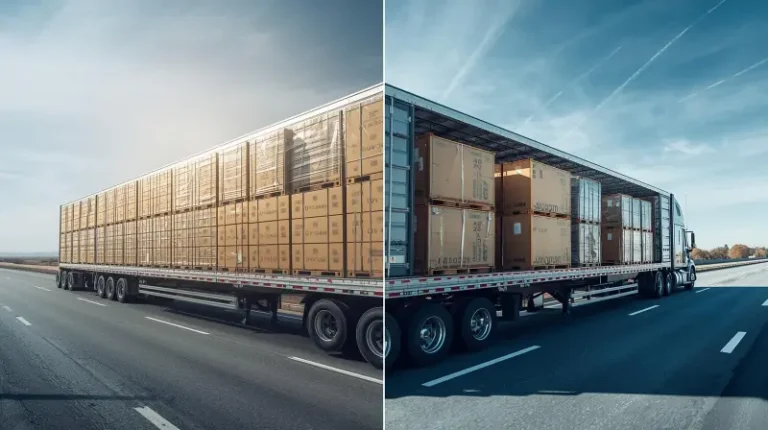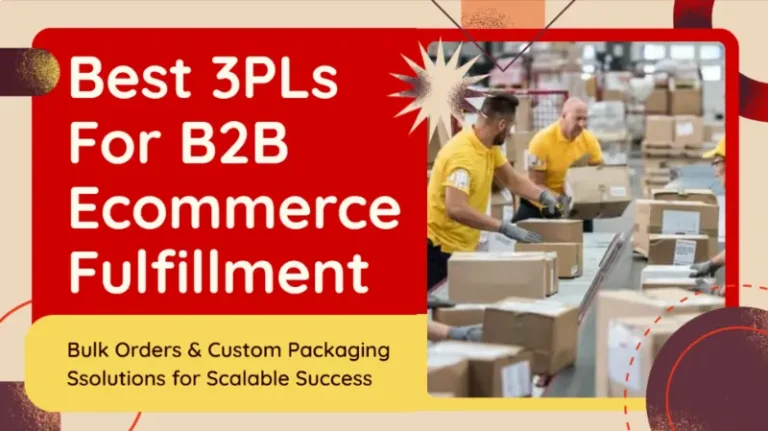Are You Overpaying for Fulfillment? 5 Hidden Fees to Watch

Last updated on August 18, 2025

If your 3PL pricing looks fine on the sales deck but ugly on the invoice, you are not alone. Fulfillment fees hide in packing tables, DIM math, “miscellaneous” surcharges, and account management fees that quietly grow. An additional fee for large items, custom packaging, or international shipping can also appear unexpectedly on invoices. Here’s a practical breakdown of the five most common hidden costs in ecommerce fulfillment in 2025, how to spot them, and how to negotiate them out.
1) DIM weight and oversize surprises
Carriers increasingly bill by dimensional weight. UPS lists a divisor of 139 for Daily Rates, and FedEx uses similar guidance; whichever is greater, DIM or actual weight, wins. If your 3PL’s cartonization drifts, you pay more shipping fees than planned. Review carton libraries and require periodic cube audits.
2) Peak and demand surcharges you didn’t model
Expect time-limited holiday price changes and peak surcharges across USPS, UPS, and FedEx this Q4. USPS has already posted its 2025 holiday adjustments, with specific per-package increases by service and zone. FedEx continues to adjust surcharges and recently increased late payment fees to 9.9% of overdue balances. Your 3PL should forecast these into your fulfillment cost model and update your pricing models ahead of peak season.
3) Inbound receiving and special projects that balloon
“Standard receiving” might sound simple, but many third-party logistics providers bill by the hour for complex inbounds, relabeling, or inventory inspection. Setup fees may also apply during the onboarding process, covering initial integration and service setup, and these one-time charges can vary depending on the complexity of your requirements. Typical ranges vary widely, and container handling can also add fees. Insist on service level agreements that define when hourly rates kick in and cap spend per container or inbound receipt.
4) Account management and “program” fees
Some fulfillment providers add a monthly account management line or a “program fee” that doesn’t correlate to measurable value, no SLA, no deliverables. If the fee funds actual logistics operations (dedicated analyst, weekly optimization, custom reporting, support, technology upgrades), great. If not, move to custom pricing where the monthly cost ties to volume or outcomes.
5) Packaging and special handling multipliers
Pick and pack is only part of the story. The packing process, including kitting and assembly, can involve additional steps to meet specific client requirements and may impact overall costs. Boxes, mailers, poly, dunnage, and inserts can add real dollars per order. Ask for pack fees by material type, whether you can bring your own custom-branded packaging, and how “oversize handling” triggers. Publish a packaging bill of materials in your RFP so quotes are comparable. Reference tables from reputable 3PL pricing explainers to benchmark.
Slash Your Fulfillment Costs by Up to 30%
Cut shipping expenses by 30% and boost profit with Cahoot's AI-optimized fulfillment services and modern tech —no overheads and no humans required!
I'm Interested in Saving Time and MoneyFlat Rate Pricing: Is It the Solution to Hidden Fees?
Flat rate pricing has become an attractive option for many ecommerce businesses aiming to simplify their fulfillment costs and avoid the headache of hidden fees. With this pricing model, your fulfillment provider charges a single, fixed shipping cost per order, regardless of the package’s actual weight, dimensions, or destination. For online stores juggling multiple SKUs and fluctuating order volumes, this can make budgeting and cost analysis much more straightforward.
The biggest advantage of flat rate pricing is predictability. Instead of worrying about surprise surcharges, fluctuating shipping rates, or unexpected account management fees, you know exactly what your shipping cost will be for each order. This transparency helps ecommerce businesses avoid hidden costs that often sneak into invoices, like fuel surcharges, residential delivery fees, or delivery area surcharges. By rolling these into a single flat rate, fulfillment providers make it easier to calculate your total fulfillment cost and plan your logistics operations with confidence.
Flat rate pricing can also drive cost savings by streamlining your fulfillment process. With fewer variables to track, your team spends less time calculating shipping costs and more time focusing on inventory management, optimizing storage space, and improving customer experience. Many fulfillment services that offer flat rate pricing also bundle in warehousing fees, packaging materials, and even custom packaging options, further reducing the risk of additional fees cropping up later.
However, flat rate pricing isn’t a one-size-fits-all solution. If your ecommerce business regularly ships large, heavy, or unusually shaped items, a flat rate may not reflect your actual shipping cost, and you could end up paying more than you would with a customized pricing model. Flat rate pricing also tends to be less flexible than tiered or weight-based pricing models, which can be adjusted as your order volume or shipping needs change. For some businesses, especially those with highly variable shipments, a more tailored fulfillment strategy may deliver better cost savings.
When evaluating flat rate pricing, consider how it impacts your warehousing costs and inventory management. Some fulfillment providers include storage fees in their flat rate, while others charge separately based on the amount of storage space your inventory occupies. Make sure you understand exactly what’s included in the flat rate and how it aligns with your business operations.
How To Calculate Your Total Fulfillment Cost
- Order fulfillment: The order fulfillment process includes receiving inventory, storage, picking, packing, and shipping, with each stage contributing to the overall cost.
- All-in per order: pick fee + additional picks + packaging + shipping label + surcharges + storage amortized + returns share + account management fees + pick and pack fee + labor costs.
- Storage: rate per storage space unit (bin, shelf, pallet, cubic foot) plus any long-term or specialized storage lines; model seasonal inventory peaks. Storage costs can be calculated as a fixed fee or flat rate, and storage fees may vary depending on space utilization and duration.
- Inbound: receiving method (per pallet, per carton, hourly), labeling, and non-compliance penalties. Inbound shipping is also a cost factor when sending inventory to fulfillment centers.
- Reverse logistics: expected return rate and per-unit processing cost.
- Shipping rates: lane-level quotes for your top SKUs and destinations; ensure major carriers and regionals are included with negotiated shipping rates. Shipping carriers and pick and pack fees can vary depending on the provider and order volume.
Cost structures for fulfillment companies and fulfillment partners can vary depending on the provider, and many fulfillment providers offer customized solutions for online stores to achieve lower costs and total cost transparency.
Fulfillment centers and fulfillment companies may use standard packing materials, but higher costs can result from special handling or hazardous materials.
Outsourcing logistics to a third-party logistics (3PL) provider can help achieve cost savings and optimize the supply chain.
It is important to compare total costs, including all fulfillment costs across providers, and all fees, to avoid surprises.
Looking for a New 3PL? Start with this Free RFP Template
Cut weeks off your selection process. Avoid pitfalls. Get the only 3PL RFP checklist built for ecommerce brands, absolutely free.
Get My Free 3PL RFPNegotiation Scripts That Work
- “Cap my hourly.” If hourly receiving is unavoidable, cap hours per inbound and include auto-approval thresholds.
- “Publish the pack BOM.” Fix the unit price of each packaging material item for 6 – 12 months.
- “Show me DIM control.” Quarterly cartonization audit with sample orders and photos, or fee credits.
- “Outcome-based account management.” Tie the monthly fee to specific deliverables and SLA improvements, not a vague “program.”
Where Cahoot Saves Money By Design
- Bulk purchasing power on materials across our network reduces pack fees.
- Cartonization and rate-shop automation curb DIM surprises.
- Multi-node placement reduces zones, so you pay ground, not air.
- Transparent invoices with line-item detail keep you in control.
Frequently Asked Questions
What is the right DIM divisor to use in 2025?
UPS lists 139 for Daily Rates, and FedEx applies dimensional weight rules with similar divisors. Always check current carrier guides; your divisor may vary by service.
Will there be 2025 holiday surcharges?
Yes. USPS has posted time-limited holiday increases for October 2025 – January 2026, and FedEx/UPS maintains demand surcharge frameworks. Model these in your fulfillment pricing now.
Are account management fees normal?
They exist, but should buy value, analytics, continuous improvement, and SLA oversight. If you cannot tie the line to outcomes, negotiate it out, or convert to custom pricing.
How do I compare 3PL quotes apples to apples?
Normalize to an all-in fulfillment cost per top SKU and destination: storage, picks, pack materials, label, surcharges, and returns. Use an identical packaging bill of materials for all bidders.
How does Cahoot help me avoid hidden costs?
We quote transparently, automate rate-shopping and cartonization, and place inventory near demand to lower logistics costs while meeting customer expectations on shipping speed.

Turn Returns Into New Revenue


 7 minutes
7 minutes


